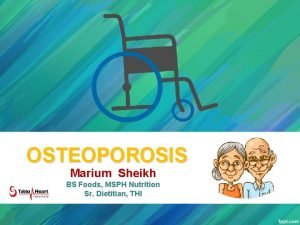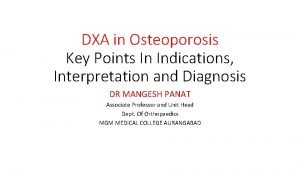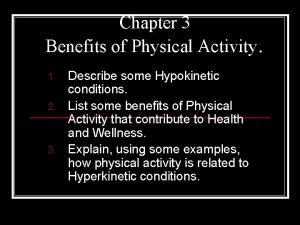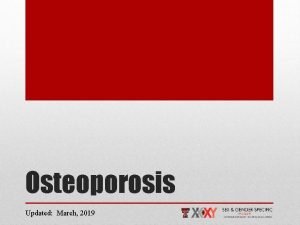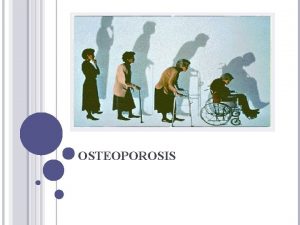Chapter 46 Exercise and the Prevention of Osteoporosis



- Slides: 3

Chapter 46: Exercise and the Prevention of Osteoporosis Clinton Rubin, Janet Rubin, and Stefan Judex

From the Primer on the Metabolic Bone Diseases and Disorders of Mineral Metabolism, 7 th Edition. www. asbmrprimer. org Figure 1 μCT of the distal femur of adult (8 yr) sheep, comparing a control animal (left) to an animal subject to 20 min/d of 30 Hz (cycles per second) of a low-level (0. 3 g) mechanical vibration for 1 yr. The large increase in trabecular BMD results in enhanced bone strength, achieved with tissue strains three orders of magnitude below those that cause damage to the tissue. These data suggest that specific mechanical parameters may represent a nonpharmacologic basis for the treatment of osteoporosis. © 2008 American Society for Bone and Mineral Research

From the Primer on the Metabolic Bone Diseases and Disorders of Mineral Metabolism, 7 th Edition. www. asbmrprimer. org Figure 2 Skeletal loading generates deformation of the hard tissue with strain across the cell’s substrate, pressure in the intramedullary cavity and within the cortices with transient pressure waves, shear forces through canaliculi that cause drag over cells, and dynamic electric fields as interstitial fluid flows past charged bone crystals. Some composite of these physical signals interacts with the morphology of the cell through interactions such as potentiated by the membrane-matrix or membrane-nucleus structures or distortion of the membrane itself to regulate transcriptional activity of the cell. © 2008 American Society for Bone and Mineral Research

